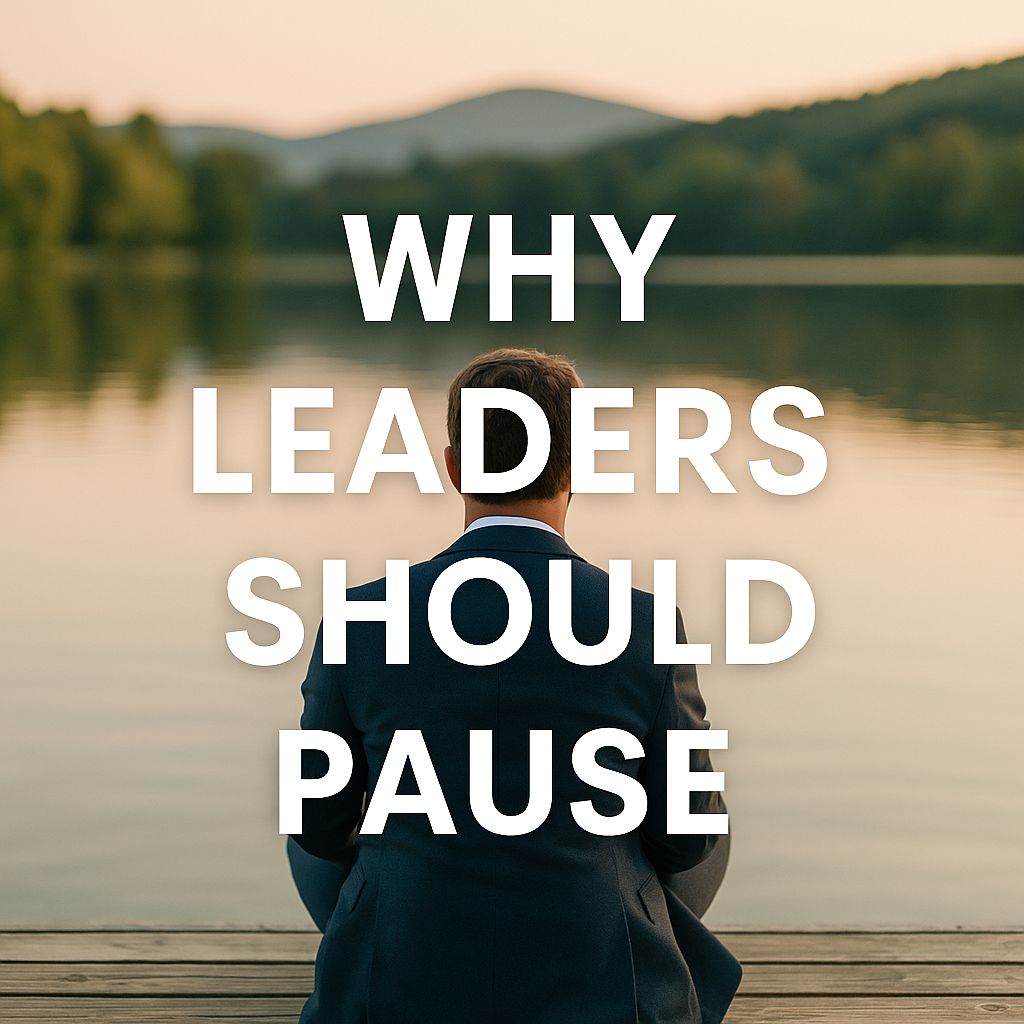By Ben Bradshaw
There’s something I’ve learnt over time, real leadership doesn’t always come from knowing the answer. Sometimes, it comes from knowing when to wait.
In business, we’re taught to be quick. Move fast, act first, speak with confidence. But I’ve found that it’s often the space between, between the pressure and the response, the question and the reaction, that defines how we lead.
And if we’re not careful, we lose that space altogether.
Why the Pause Actually Matters
Let’s be honest, most people don’t pause because they think it looks weak. The truth is, when used properly, a pause becomes one of the most underrated tools in leadership.
You create a gap.
Not to hesitate, but to listen.
To feel what’s really going on.
To let your response rise from clarity, not from habit.
Science backs this up. When we pause deliberately, we activate the prefrontal cortex, the part of the brain that handles things like long-term thinking, empathy, and emotional regulation (Siegel, 2007).
If we skip the pause, we end up reacting from the amygdala, the fear and survival zone. That might be useful in an emergency, but in leadership? It can cost you trust, timing, and the respect of your team.
What the Pause Signals
Whether you realise it or not, your team is constantly tuning into you. They’re watching how you show up, not just what you say.
When you hold space before reacting, it tells them a few important things:
- You’re grounded, not rushed
- You’re actually present
- You’re not driven by stress or ego
- You care more about getting it right than getting it fast
In one study from Frontiers in Psychology, researchers found that leaders who practised mindful awareness had teams who were more engaged, more innovative, and less stressed (Reb et al., 2019).
That doesn’t come from talking more. It comes from holding better space.
A Personal Lesson I’ll Never Forget
Years ago, I made a decision too fast. Everything about it looked right on paper. The numbers made sense. The logic was solid.
But it didn’t feel right, and I knew it.
I didn’t give myself space to pause. I charged ahead because I felt like I had to. That decision didn’t just cost time or money, it cost momentum, morale, and energy. Since then, I’ve built in pauses on purpose. Before calls. Before difficult conversations. Before making the big calls. It’s changed everything. Not just how I lead, but how people experience my leadership.
What Happens When You Don’t Pause
When we skip the pause, here’s what tends to show up:
- Stress spreads into the team
- Clarity gets clouded
- Feedback comes out rough or unclear
- Strategy gets reactive instead of grounded
- You carry more weight than you need to
Pausing doesn’t mean doing nothing. It means creating just enough space for wisdom to catch up to instinct.
This Isn’t Woo-Woo, It’s Real Leadership
I’m not talking about silence for the sake of it. I’m talking about presence.
That moment when you sit with a decision for a little longer. When you hold the room, not because you’re dominating, but because you’re listening. That’s leadership. That’s power, quiet, confident, tuned-in power.
And in today’s world, that kind of leadership is rare.
Practical Ways to Build the Pause Into Your Day
Here’s how I make this part of my rhythm, no incense, no guru voice, just real-world tools:
1. Pause Before You Speak
Take one conscious breath before you say the next thing. That’s it.
Simple, but incredibly effective.
2. Use One Anchor Question
Ask yourself: Am I speaking from clarity, or reacting from pressure?
That question alone has stopped me making a dozen wrong calls.
3. The 90-Second Buffer
When emotions are running high, wait 90 seconds before replying.
Jot down what you feel. Then ask, what’s actually true?
4. Night-time Reflection
Before bed, I take a couple of minutes to scan the day.
Where was I aligned? Where did I speak too soon? What do I want to change tomorrow?
It’s not spiritual fluff. It’s signal hygiene.
Final Thought
You don’t need to be the loudest voice in the room. You don’t even need to always be the first to speak.
What matters is that you speak from clarity. That you lead from presence. That when you choose to move, it comes from alignment, not adrenaline.
I’m going deeper into this in my upcoming book, Signal in the Silence. It’s about what we access when the noise drops out and presence takes over.
This pause, this space between pressure and action, it’s where leadership begins.
Because the real signal? It comes through in the quiet.
References
- Siegel, D. (2007). The Mindful Brain: Reflection and Attunement in the Cultivation of Well-Being.
- Reb, J., Narayanan, J., & Chaturvedi, S. (2019). “Leading Mindfully: Two Studies on the Influence of Supervisor Trait Mindfulness.” Frontiers in Psychology.
- Boyatzis, R. & McKee, A. (2005). Resonant Leadership. Harvard Business Press.

